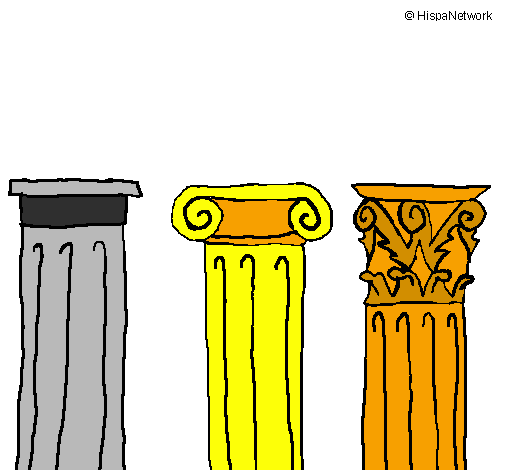

The architectural order of a classical building is akin to the mode or key of classical music the grammar or rhetoric of a written composition. To these the Romans added, in practice if not in name, the Tuscan, which they made simpler than Doric, and the Composite, which was more ornamental than the Corinthian. The three orders of architecture-the Doric, Ionic, and Corinthian-originated in Greece.
An order in architecture is a certain assemblage of parts subject to uniform established proportions, regulated by the office that each part has to perform.Coming down to the present from Ancient Greek and Ancient Roman civilization, the architectural orders are the styles of classical architecture, each distinguished by its proportions and characteristic profiles and details, and most readily recognizable by the type of column employed. Kaj li aldonas la tipojn: dorika, jonika, korinta, komposita kaj kariatida (en bildo tiu lasta). Li indikas etimologion el la latina ordo (ordo, dispono). Laŭ Francisko Azorín ordo estas Dispono k. La baza ideo de tiu hierarkiigo de la kolonaj ordoj tamen jam konatis dum la antikva epoko. Laŭ la kompreno de la renesanco la kvin kolonaj ordoj fontas unu el la alia kaj en sia tuto bildigas la hierarkie ordigita mondo. La el tiuj taskoj evoluigitaj malsamaj detaloj de la kvin stiloj jam en la antikva epoko ankaŭ transpreniĝis al arkitekturaj sistemoj el pilastroj kaj arkoj, kaj tiel daŭris ĝis la modernismo. La komuna temo da kvin arkitekturaj ordoj estas la rilato de kolonoj al la fundamento kaj la tegmentaj traboj, la transiro de unu konstruero al alia kaj la enplekto en la kompleta koncepto kaj aspekto de la konstruaĵo. La kvin klasikaj ordoj estas la plej grava ordiga sistemo de la antikva kaj pli posta arkitekturo - ankoraŭ valida de la renesanco ĝis la frua 20-a jarcento. Je charakterizován sloupy a kladím (překladem). #Capitello dorico ionico e corinzio pro
Klasická řádová architektura (nebo jen řádová architektura, též systém sloupových řádů) je termín používaný pro architektonický systém vycházející z klasické řecké antické architektury.

Ansätze zu dieser Hierarchisierung – ohne weltinterpretatorische Sicht – sind aber bereits der klassischen Antike geläufig. Nach dem Verständnis der Renaissance bauen die fünf Säulenordnungen aufeinander auf und stellen in ihrer Gesamtheit ein Abbild der hierarchisch geordneten Welt dar. Die aus dieser Aufgabe entwickelten unterschiedlichen Details wurden bereits in der Antike auch auf Pfeiler- und Bogensysteme übertragen, eine Entwicklung, die fruchtbar in der Neuzeit weiterwirkte. Das gemeinsame Thema der fünf Säulenordnungen ist das Verhältnis von Säule zu Gebälk, Vermittlung und logischer Bezug zwischen den Baugliedern und ihre Einbindung in den Gesamtentwurf eines Gebäudes. anderen Stützenkonstruktionen formal abzugrenzen. Der Begriff Ordnung bezeichnet baugeschichtlich immer ein System vertikaler Bauelemente mit Basis und Kapitell.
Die fünf klassischen Säulenordnungen sind das wichtigste Gliederungssystem der antiken und der neuzeitlichen Architektur von der Renaissance bis zum frühen zwanzigsten Jahrhundert.






 0 kommentar(er)
0 kommentar(er)
